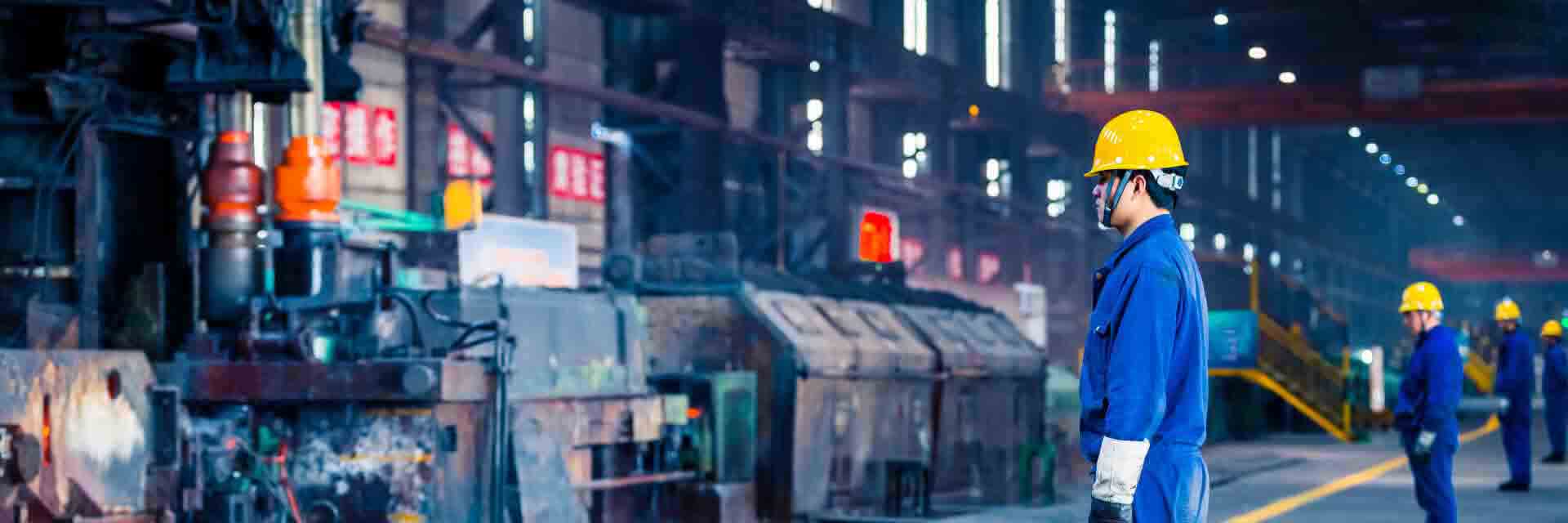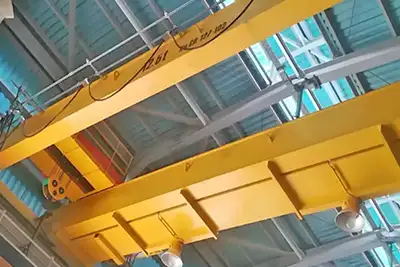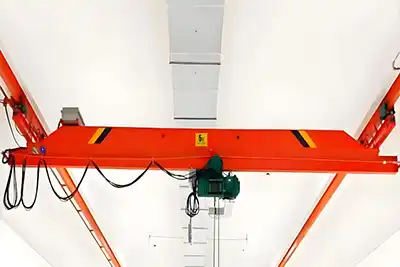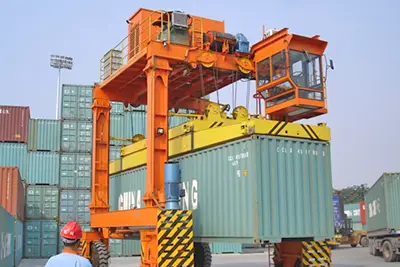Choosing the Perfect Dual-Purpose Overhead Crane for Steel Plants
A practical guide to selecting the right dual-purpose overhead crane that improves efficiency, saves space, and boosts steel plant productivity.
Introduction
Brief Overview of Overhead Cranes in Steel Plants
Overhead cranes are a backbone of steel plants. They help move heavy loads like steel coils, billets, and slabs safely and efficiently. Without these cranes, handling such massive materials would be slow and dangerous. Overhead cranes run on rails fixed above the work area, allowing smooth and precise lifting and transportation of heavy items across the plant.
Steel plants often deal with tough working conditions—high temperatures, dust, and continuous operation. Because of this, the cranes used here must be reliable and strong. Choosing the right crane ensures the workflow is smooth and accidents are minimized.
Importance of Dual-Purpose Cranes in Optimizing Operations
Dual-purpose cranes are specially designed to handle more than one type of task. For example, one crane might be used to lift both steel coils and billets, instead of needing separate cranes for each job. This flexibility saves space and cuts down on equipment costs.
Using dual-purpose cranes means fewer cranes to maintain, less downtime switching between machines, and better use of available floor space. It can make a big difference in productivity and operational efficiency in a busy steel plant.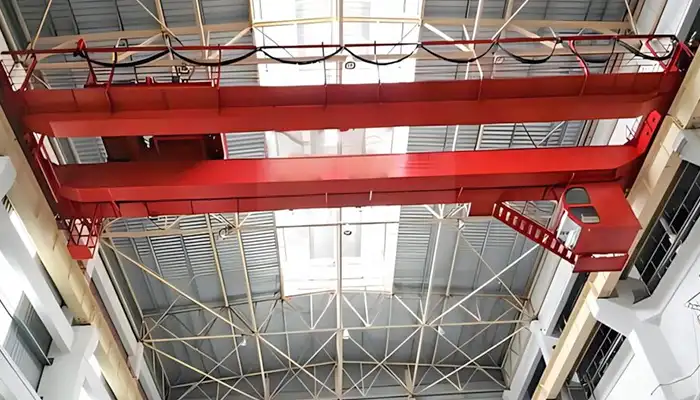
Purpose of This Guide
This guide is meant to help steel plant managers, maintenance teams, and equipment buyers. It breaks down what you need to think about when picking a dual-purpose overhead crane. We’ll cover the key factors to consider, what features to look for, and tips on choosing the best crane that fits your plant’s needs.
The goal is to make your crane selection easier and more confident. When you understand what to look for, you get a crane that works well, lasts longer, and improves your plant’s overall performance.
Dual-Purpose Overhead Cranes
What Is a Dual-Purpose Overhead Crane?
A dual-purpose overhead crane is a lifting system designed to perform more than one material handling task within a single setup. In a steel plant, where operations involve handling various types of heavy loads—from raw materials to finished products—this kind of crane brings a lot of flexibility.
Instead of installing multiple cranes for different purposes, one dual-purpose crane can handle a wider range of jobs. This could mean lifting both steel billets and steel coils with the same crane. It’s made possible by using different lifting attachments, such as magnets, clamps, or coil hooks, that can be changed based on the task at hand.
These cranes are often customized to meet the plant’s specific needs. Some are designed to switch between tasks quickly with minimum manual intervention. Others may require minor manual changes but still eliminate the need for a second crane. The idea is simple: get more done with less equipment.
Common Dual Functions in Steel Plants
In a steel plant, material handling needs are varied and often continuous. A dual-purpose crane can support multiple stages of production without switching equipment. Here are some common examples of how dual-purpose cranes are used:
- A crane may be used to lift steel billets from a casting bay and then switch to handling steel coils in a storage area, just by changing the lifting tool.
- Some cranes can handle both scrap materials being fed into a furnace and finished steel plates ready for delivery.
- In the casting area, a crane might be used to transport hot molds, and later in the shift, carry away slag or other by-products.
The key point is that a dual-purpose crane reduces downtime and simplifies operations by eliminating the need to use different cranes for each task.
Why Choose a Dual-Purpose Crane?
There are several strong reasons to invest in a dual-purpose overhead crane for your steel plant. These cranes are not only practical but also cost-effective and efficient in the long run.
- Improved Efficiency: Using one crane to do the work of two or more means operations run more smoothly. There’s less waiting time for cranes to be available. Production continues without delay because the crane can handle different materials as needed. The crane is in use more often, which also means better return on investment.
- Cost Reduction: Buying and maintaining one crane instead of two or more cuts down capital investment. Fewer cranes mean lower installation costs, fewer crane operators, and reduced maintenance needs. In addition, fewer lifting tools are required, especially when the same crane can adapt to different materials.
- Space Optimization: Many steel plants have limited space, especially in older or urban facilities. Installing multiple cranes can create congestion and limit movement. A dual-purpose crane requires only one set of rails and one working zone, which helps in keeping the work area clear and organized. It also frees up floor space for other equipment or storage.
- Flexibility for the Future: Steel production demands can change over time. A dual-purpose crane is a good long-term investment because it can be adapted as your operations grow or shift. Instead of replacing equipment when your workflow changes, you can simply add or change the lifting attachments. This keeps your plant flexible without major upgrades.
A dual-purpose overhead crane is not just a convenient solution—it’s a smart strategic move. It gives steel plants the ability to do more, spend less, and stay adaptable in a competitive environment.
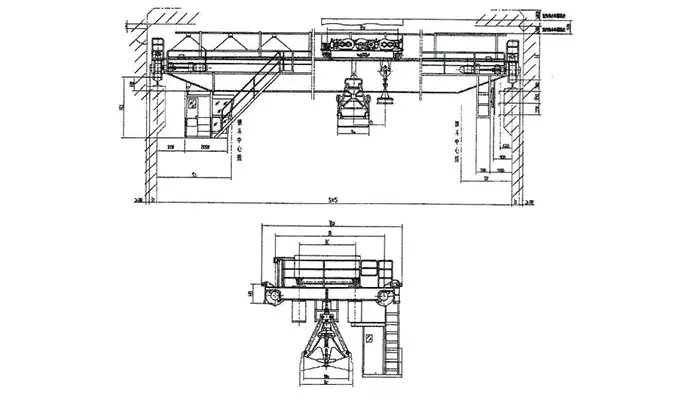
Overhead crane specifications for your reference
KeyConsiderations When Choosing a Dual-Purpose Crane
Choosing the right dual-purpose crane for your steel plant involves more than just checking the lifting capacity. You need to match the crane to your plant's actual working conditions, layout, and material handling demands. Let’s break down the key factors that help you make the right decision.
Capacity Requirements
Start with the basics: how much weight will the crane need to lift?
In a steel plant, this isn’t always a simple number. Different materials—billets, coils, molds, scrap—come in different sizes and weights. And since a dual-purpose crane is meant to handle more than one type of load, you have to consider the heaviest scenario.
Things to consider:
- Check the maximum load for each material type.
- Don’t forget to include the weight of the lifting device (magnet, hook, clamp, etc.).
- Choose a crane that can handle the heaviest combination safely.
- Avoid oversizing—it raises costs and reduces efficiency.
The right capacity gives you peace of mind and smooth operations. Too small, and you risk damage or safety issues. Too large, and it becomes bulky and expensive for no good reason.
Span and Coverage Area
Span refers to the width the crane needs to cover—from rail to rail. But it’s not just about width. You also need to think about how much of the floor area the crane must reach.
Measure the working area and check for any obstructions like columns, machines, or storage racks. Then determine what span is needed to fully cover your work zones.
When assessing span:
- Match the span to your building’s structure and working layout.
- Keep in mind that longer spans may require stronger support and bigger beams.
- Don’t forget the trolley travel distance and full coverage needs.
- A well-sized span reduces dead zones and helps improve productivity.
Choosing the correct span avoids gaps in coverage and keeps workflow smooth. Go too wide or too narrow, and the crane may cause more problems than it solves.
Lifting Height and Hook Approach
How high do you need to lift? And how close can the hook get to walls or other equipment? These are both critical for a dual-purpose crane.
Lifting height affects your ability to move materials over obstacles or into storage. Hook approach affects how efficiently you use your space—especially in tight areas.
Important lifting height considerations:
- Know your tallest load and any overhead equipment clearance.
- Consider both the minimum and maximum lifting heights.
- For pits, trenches, or high racks, plan your lifting range accordingly.
For hook approach:
- Check how close the hook can get to the end walls or side barriers.
- Good hook approach helps you access corners and tight areas.
- Look for cranes with compact trolleys or low-headroom designs if space is tight.
A good crane setup gives you flexibility across all types of material handling jobs—from bulky billets to tightly stored coils.
Speed and Control Precision
Different jobs need different speeds. Sometimes you need to move fast, like when feeding a furnace. Other times, you need to slow down and be precise—like when placing coils into narrow racks.
That’s why speed control matters. And it needs to be reliable.
Look for cranes with:
- Adjustable hoisting and trolley speeds to suit different jobs.
- Smooth acceleration and braking to prevent swinging or jerking.
- Frequency inverters (VFDs) for better speed and motion control.
Also think about the control system:
- Manual control works for basic operations.
- Semi-automatic systems help reduce operator workload.
- Fully automated controls are best for repetitive, high-precision jobs.
A dual-purpose crane should be easy to control whether it’s moving heavy scrap or carefully placing high-value coils.
Durability and Maintenance Needs
Steel plants are tough environments. Cranes need to handle heat, dust, and sometimes even moisture or corrosive fumes. Build quality matters a lot here.
You want a crane that lasts—not one that constantly breaks down or needs frequent maintenance.
Durability tips:
- Choose cranes made with high-strength steel and reinforced welding.
- Go for motors and gearboxes that are rated for heavy-duty use.
- Ask for protective covers or cooling systems if the crane will work near furnaces or hot zones.
For maintenance:
- Pick a design that makes inspection and repair easier.
- Ask for spare part availability and service support.
- Consider cranes with self-diagnostic features for quicker troubleshooting.
The goal is simple: a crane that works hard, stays reliable, and doesn’t slow down your production.
Safety Features
Safety is non-negotiable. Whether you’re lifting a small bundle or a 20-ton coil, the crane must protect your people and your materials.
Modern overhead cranes come with many built-in safety functions, but you still need to make sure the one you choose has everything required for your plant.
Essential safety features:
- Overload protection to stop lifting beyond the rated capacity.
- Emergency stop buttons that halt all movement instantly.
- Limit switches for hoist height and trolley travel.
- Anti-collision systems, especially if multiple cranes operate in the same bay.
Also ensure:
- The crane complies with national and international safety standards (like ISO, CE, or FEM standards).
- All lifting accessories—magnets, clamps, hooks—are tested and certified.
- Operators are trained and control systems are user-friendly.
A safe crane is one that you can trust day after day, even in the most demanding shifts.
Customization Options for Dual-Purpose Cranes
Not all steel plants are the same. That’s why your crane shouldn’t be a one-size-fits-all solution. A dual-purpose overhead crane should be tailored to match your specific materials, workflow, and plant layout.
Tailoring Crane Features to Your Workflow
Every steel plant has its own way of doing things. Some focus on rolling billets, others on coiling sheet steel or moving scrap. A good crane supplier should ask about your process and then adjust the crane to suit.
Key customization areas:
- Lifting mechanisms for different shapes and materials.
- Travel speed and control systems based on how fast or precisely you need to move.
- Special painting or surface treatments to handle high heat or dust.
Custom design isn’t just about making the crane “fancy”—it’s about improving work efficiency and reducing wear.
Dual-Purpose Tools and Attachments
To truly serve two purposes, your crane needs the right tools. The lifting device plays a big role in what the crane can handle.
Common attachments include:
- Electromagnetic lifters – ideal for lifting billets, plates, and scrap.
- Mechanical clamps – great for securely gripping steel coils or bundles.
- Grabs or buckets – often used for handling loose scrap or irregular shapes.
- Rotating hooks – useful when you need to turn or align loads during placement.
Some cranes even use quick-change lifting systems, allowing your team to switch attachments depending on the job. This flexibility makes a single crane handle more work—saving space and money.
Modular Design for Future Needs
It’s hard to predict the future, but it’s smart to plan for it. If your steel plant expands or changes processes, a modular crane design can make upgrades easier.
Benefits of modularity:
- Add new lifting tools without replacing the entire crane.
- Upgrade the control system later (e.g., from manual to semi-automated).
- Adapt to new safety or environmental standards without full redesign.
- Easier to repair or replace parts due to standardized components.
A modular dual-purpose crane grows with your plant and helps reduce long-term replacement costs.
Integration with Existing Infrastructure
A new crane should fit in, not cause problems. When installing a dual-purpose crane, you must make sure it works well with what’s already in your plant.
Fitting with Your Layout and Workflow
Your crane should move materials smoothly from one stage of production to the next. That means planning the rail layout, end stops, hook approach, and lifting zones to avoid bottlenecks.
Consider:
- How materials enter and exit the work area.
- Whether the crane can pass over machines, racks, or walkways.
- If multiple cranes are working in the same bay—can they avoid collisions?
- Ceiling height and runway beam support for overhead systems.
Careful integration helps the crane enhance your existing workflow instead of slowing it down.
Power Supply and Installation Constraints
Cranes need power, and that power must be stable and compatible with your plant’s supply.
Check the following:
- Voltage and frequency (match local electrical standards).
- Whether your crane will use a busbar or cable reel power system.
- If your site needs explosion-proof or heat-resistant electrical components.
- Available space for the electrical cabinet and operator station.
Also, think about how the crane will be installed. Can it be assembled on-site easily? Will it need special lifting tools or permits?
Planning for installation saves time, reduces risk, and avoids unexpected downtime.
Coordination with Other Equipment
Cranes don’t work alone. They often operate alongside conveyor systems, forklifts, ladles, or storage racks. You want a crane that fits into the bigger picture.
Key points for coordination:
- Ensure the crane can transfer loads to or from other equipment smoothly.
- Match the crane's control systems with plant-wide automation or tracking systems if used.
- Align the lifting paths with storage locations or processing stations.
When a dual-purpose crane is properly integrated, it can act as the “central mover” in your material handling chain—making every step faster and safer.
Vendor Selection and Evaluation
Choosing the right crane isn’t just about the equipment. It’s also about the people behind it. A reliable manufacturer or supplier can make a big difference in how smoothly your crane project goes—both now and in the future.
Why Choosing a Reputable Supplier Matters
A crane is a major investment. You want it to last and perform well. That’s why working with a trusted crane supplier is key.
A good vendor should:
- Have experience with steel plant crane projects.
- Understand your industry’s needs, not just general crane use.
- Offer clear communication during the entire process—from inquiry to delivery.
- Provide detailed technical documentation and training.
The right supplier becomes a long-term partner, not just a one-time seller.
Certifications and Quality Standards to Look For
Certifications help you know the crane meets industry benchmarks for safety, durability, and performance.
Common and important certifications include:
- ISO 9001 – shows the supplier has a solid quality management system.
- CE Marking – indicates the crane meets European safety and health requirements.
- FEM or CMAA standards – related to crane classification and design standards.
- Third-party inspection reports – give you extra assurance of build quality.
Ask for proof. A reliable supplier will be happy to show these.
After-Sales Support and Maintenance Services
Even the best cranes need maintenance. And if something goes wrong, you want help—fast.
Good support includes:
- Quick response times for service calls.
- Spare parts readily available.
- Technical support, both remote and on-site.
- Optional maintenance packages or training for your team.
If a supplier disappears after delivery, that’s a red flag. Go with someone who offers long-term service.
Requesting Customized Quotes
Don’t settle for a general quote. A good supplier should tailor the offer to your plant’s specific needs.
When requesting a quote, make sure to:
- Share your plant layout, load types, and lifting needs.
- Discuss power supply, environment, and any special constraints.
- Ask for different configuration options with pros and cons.
- Confirm what’s included: transport, installation support, spare parts?
A custom quote helps you compare value—not just price.
Cost vs. Value: Making a Wise Investment
A dual-purpose crane isn’t cheap. But the lowest price doesn’t always mean the best deal. It's important to weigh both short-term cost and long-term value.
Don’t Focus Only on Purchase Price
The initial cost is just one part of the investment. Cheaper cranes may break down sooner, cost more to repair, or require frequent replacements.
Think beyond the price tag:
- Will the crane meet your needs for the next 10–15 years?
- Is it flexible enough to adapt to future production changes?
- How much downtime could you avoid with a better crane?
Sometimes, spending a bit more now saves a lot later.
Energy Efficiency and Maintenance Costs
Modern cranes can be more energy-efficient. This is especially important in steel plants that run 24/7.
Consider:
- Inverter-driven motors that reduce power usage during light loads.
- Smart braking systems that save energy.
- Easy-to-service components that lower annual maintenance costs.
Over time, these features add up to big savings.
Calculating Return on Investment (ROI)
Look at how the crane improves your workflow. Does it make loading faster? Reduce waiting time? Improve safety?
Ways a crane can boost ROI:
- Handling two types of loads with one system cuts equipment costs.
- Less downtime due to better reliability.
- Fewer accidents thanks to smart safety features.
- Reduced labor costs if the crane system is more efficient.
A crane that improves productivity every day eventually pays for itself—and then some.
Conclusion
A dual-purpose overhead crane can be a smart investment—if it’s chosen with care. You’re not just buying lifting equipment. You’re improving how your steel plant runs every day.
Here’s what to keep in mind:
- Know your load types, lifting frequency, and working area.
- Choose the right capacity, height, and control system.
- Think about long-term reliability, not just upfront cost.
- Safety and compliance are non-negotiable.
- Customize the crane to fit your workflow—not the other way around.
Focus on What Matters
Don’t get lost in technical jargon. Instead:
- Prioritize customization that improves efficiency.
- Insist on strong safety features.
- Choose a supplier who offers solid after-sales support.
These three things often separate a good crane project from a frustrating one.
Final Tips for Steel Plant Managers
Before making a decision:
- Ask for similar project references.
- Walk through the plan with your maintenance and safety teams.
- Think long-term—what will you need 5 or 10 years from now?
- And lastly, don’t rush. A good crane is worth taking time to get right.

